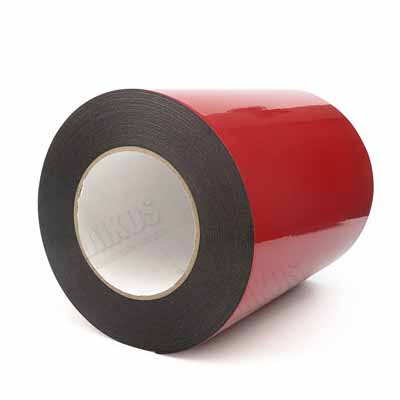Polyethylene foam tape is a popular adhesive product used in a variety of industries worldwide. It is a specialty tape that is engineered to provide superior bonding performance, cushioning, and resilience in demanding applications. In this article, we will explore the key features of polyethylene foam tape, its applications, and how it compares to other types of foam tape.
Polyethylene foam tape is made of a closed-cell foam material, which is a type of foam that has cells that are sealed from each other, preventing air or liquids from passing through. This makes the foam tape an excellent choice for applications where leakage is a concern. The foam material also provides cushioning and shock absorption, making it ideal for applications that require protection against damage.
The foam tape is coated with a pressure-sensitive adhesive that provides excellent bond strength to various surfaces, including plastic, metal, and painted surfaces. The adhesive is commonly acrylic-based, which provides excellent durability, tackiness, and resistance to environmental factors, such as temperature extremes, UV light, moisture, and chemicals.
Polyethylene foam tape is available in different thicknesses, widths, lengths, and colors to suit different applications. It can be easily cut or shaped to fit specific requirements, such as irregular or curved surfaces. The foam tape can also be custom printed with logos, branding, or instructions for easy identification or tracing.
Polyethylene foam tape finds extensive use in several industries, such as automotive, aerospace, construction, electronics, medical, packaging, and sports. Some of the common applications of polyethylene foam tape include:
1. Automotive: bonding exterior trim, emblems, nameplates, and mirrors.
2. Aerospace: sealing doors, hatches, and flanges, cushioning interior components, and wiring harnesses.
3. Construction: sealing joints, covering gaps, and mounting signage.
4. Electronics: cushioning and protecting sensitive components, bonding LCD displays, and insulation.
5. Medical: mounting devices, securing cables, and protecting equipment.
6. Packaging: cushioning and insulation, securing contents, and taping boxes.
7. Sports: padding helmets, shin guards, other protective gear, and cushioning handlebars.
Comparing Polyethylene Foam Tape to Other Types of Foam Tapes
Polyethylene foam tape is not the only type of foam tape available in the market. Other types of foam tape include polyurethane foam tape, PVC foam tape, neoprene foam tape, and eva foam tape. Here is a brief comparison of these foam tapes with polyethylene foam tape:
1. Polyurethane foam tape: polyurethane foam tape has similar features to polyethylene foam tape, but it is softer, more flexible, and has a higher tack level. It is ideal for cushioning and sound-deadening applications.
2. PVC foam tape: PVC foam tape is a lower-cost option than polyethylene foam tape, but it has lower durability and resistance to environmental factors. It is ideal for non-critical applications.
3. Neoprene foam tape: neoprene foam tape is a more robust option than polyethylene foam tape, but it is less flexible and more expensive. It is ideal for waterproof and chemical-resistant applications.
4. Eva foam tape: EVA foam tape is similar to polyethylene foam tape, but it has a lower density and strength. It is ideal for lightweight applications that require cushioning and padding.
Polyethylene foam tape is a versatile and reliable adhesive product that provides superior cushioning, bonding strength, and resilience in various applications. It is made of closed-cell foam material, coated with a pressure-sensitive adhesive that provides excellent tackiness, durability, and resistance to environmental factors. Polyethylene foam tape finds extensive use in several industries, such as automotive, aerospace, construction, electronics, medical, packaging, and sports. While other types of foam tape exist, polyethylene foam tape stands out for its superior features, cost-effectiveness, and easy customization.




